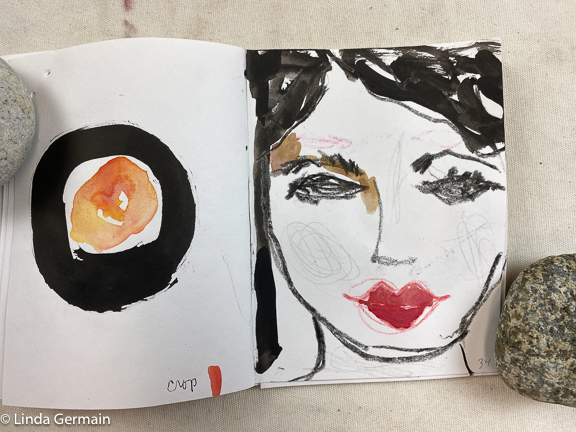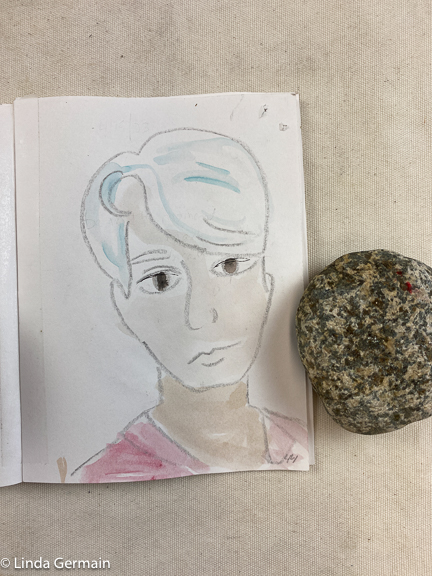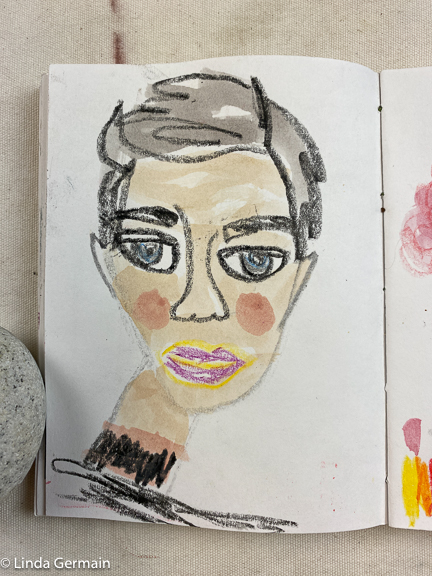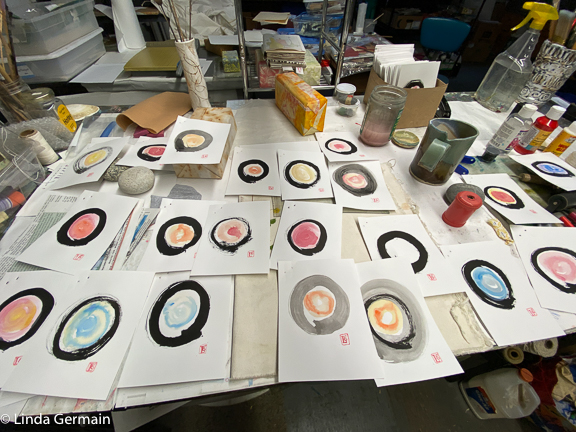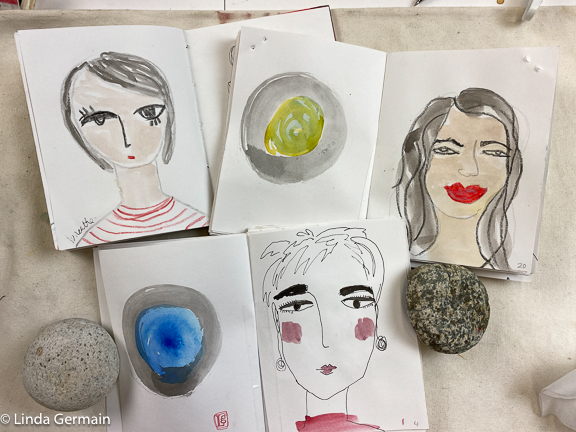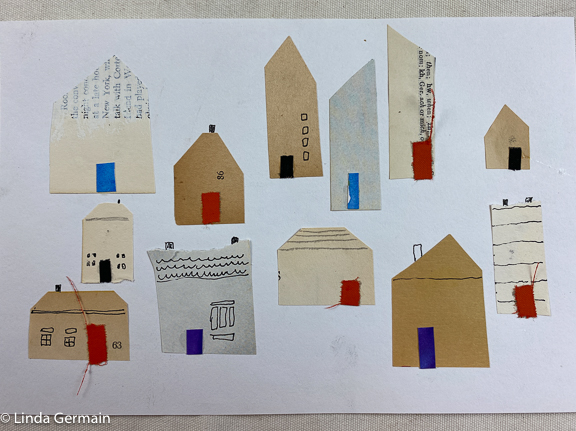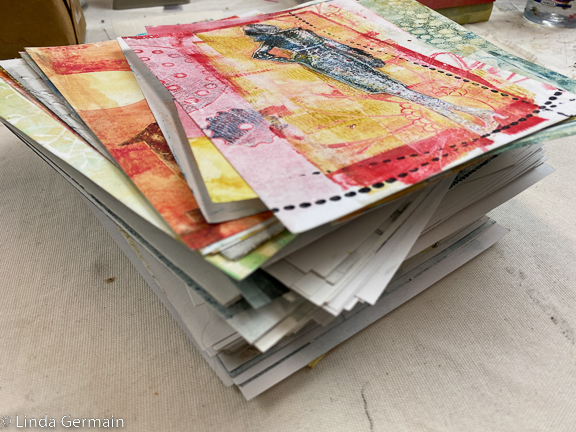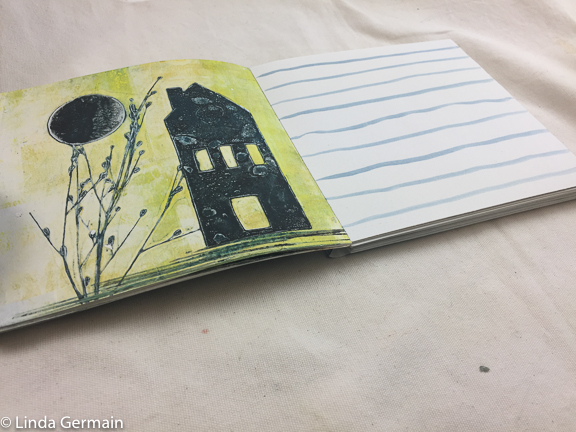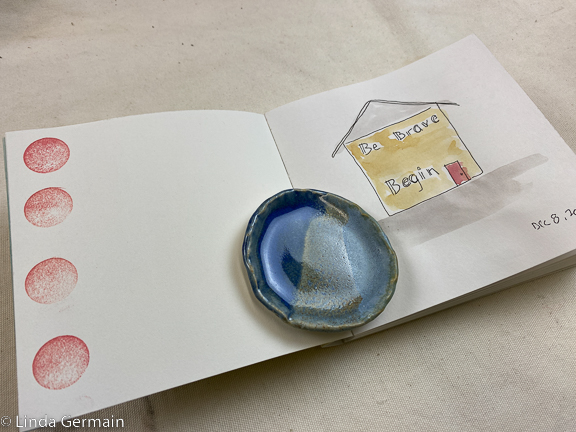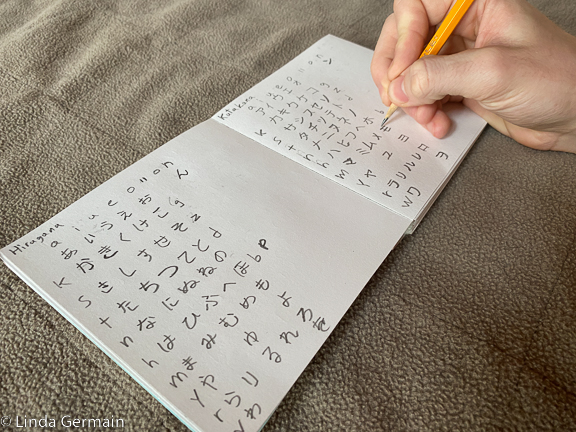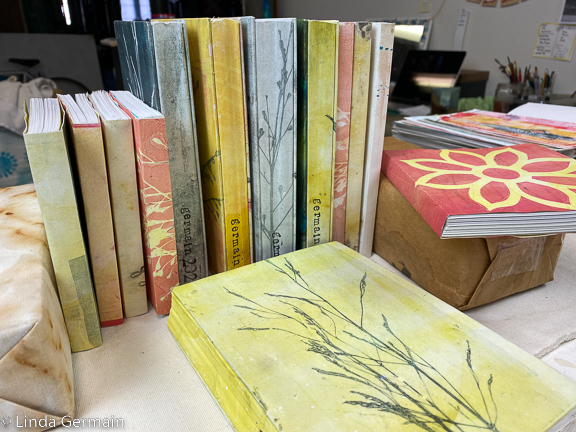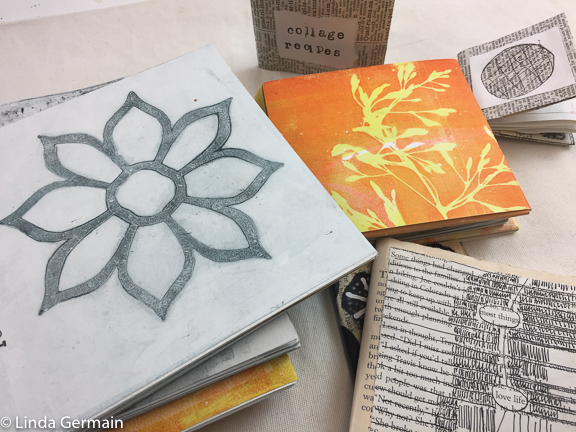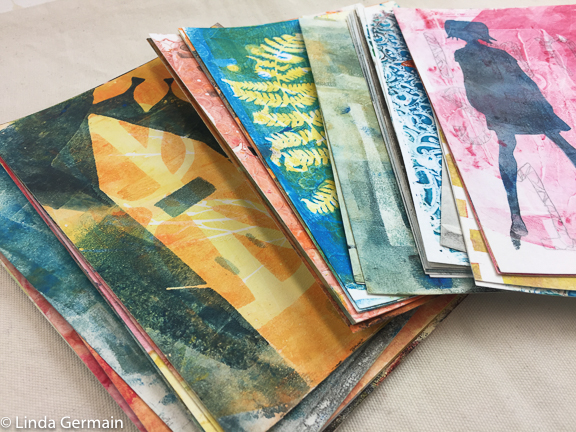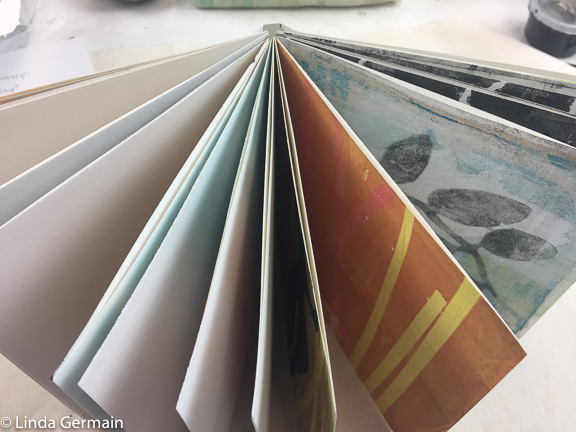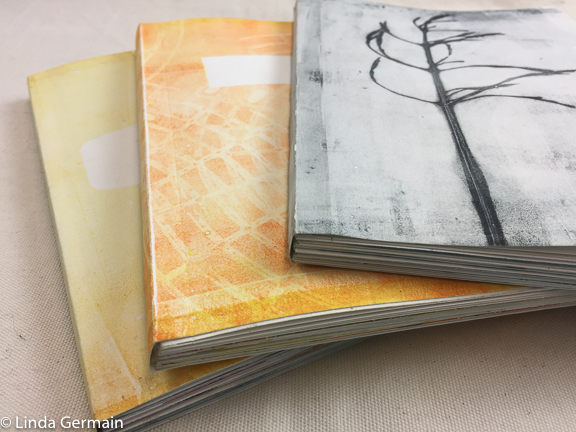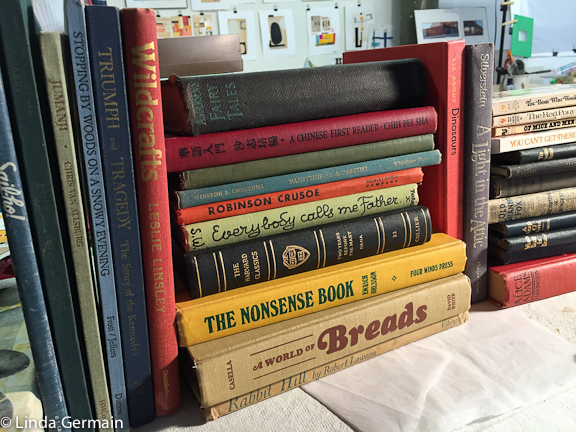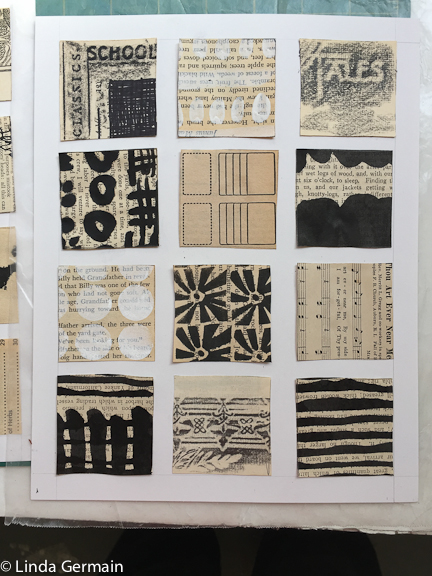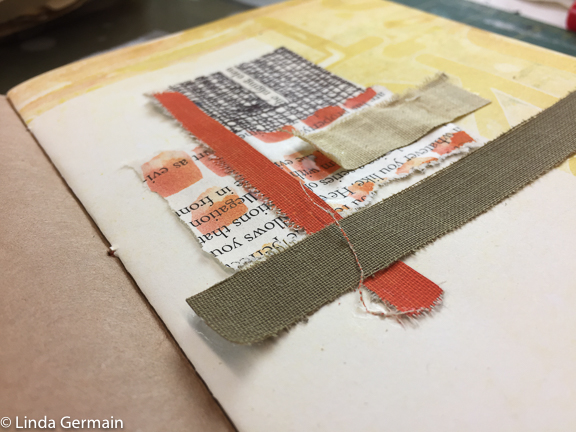Looking at Faces
I have been playing with quick sketches of faces.
I think my seeing is improving. I am starting to see the different shapes that the facial features can take.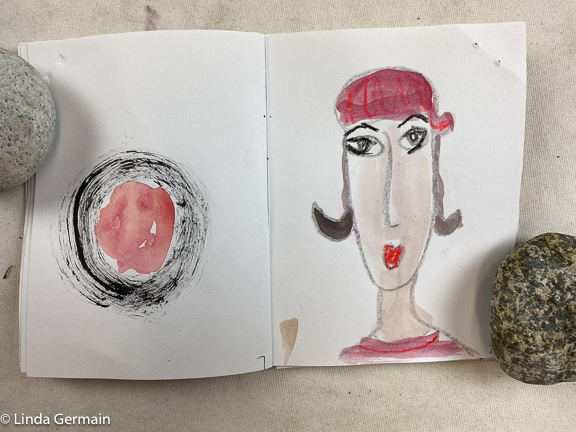
I practice my “seeing” the shape of eyes, nose and mouth, as I watch videos and talk to people. I am enjoying this relaxed way of learning.
I have been exploring different drawing materials. My current favorites:
I like to work in 2 or 3 small notebooks at one time. That way the watercolors have time to dry. I have bound a bunch of Enso’s that I did earlier this year. I was wondering what I was going to do with all those zen circles.
They are painted on 90 lb. drawing paper and the paper is a little warped, but I was still pretty successful in using the double fan glue binding to hold 20 pages together.
If you have a lot of single sheet papers that you would like to bind into a book, then check out the class Bound Prints. I teach you how to use the glue based, double fan binding.
Enjoy!
